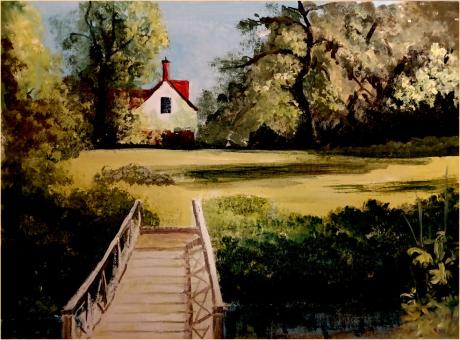" P Yates" and inscribed on the reverse
The sixteenth-century exterior of the Grade I-listed house hides a medieval hall, and traces of the bishop’s private chambers. Many features survive including probably the earliest domestic wall paintings in Suffolk. The Hall is at the centre of a traditional mixed farm, which has won awards for conservation and wildlife management.
South Elmham was the location of the episcopal estate, the Bishop’s See (Court) of Elmham, dating back to the seventh century. Nothing exists from those earliest days, except a scattering of pottery on the settlement sites. The Vikings allegedly made sure of that with their plundering and burning of the East Anglian Minsters.
But the connection was strong and remained intact. In 1100, the then Norman Bishop of East Anglia, Herbert de Losinga, founded Norwich Cathedral and subsequently gifted South Elmham to the Priory of Norwich. And this is where the story of South Elmham’s Palace really begins.
The first Bishop of Norwich appears to have been a fan of the South Elmham estate – he stocked its deer park well. For the wealthy medieval bishops, the principal attraction of South Elmham was its good hunting.
South Elmham Hall became a ‘des-res’ at the heart of a deer park. A Great Hall in which to hold court was built with chambers and a private chapel for the Bishop. And as the palace took shape in the thirteenth century with fine archways and stonework, this domestic building was adorned with lavish wall-paintings.

